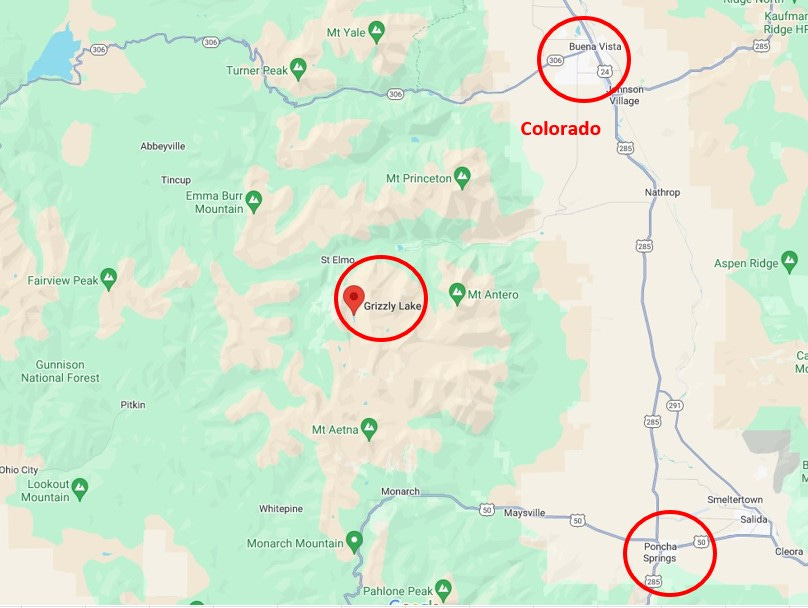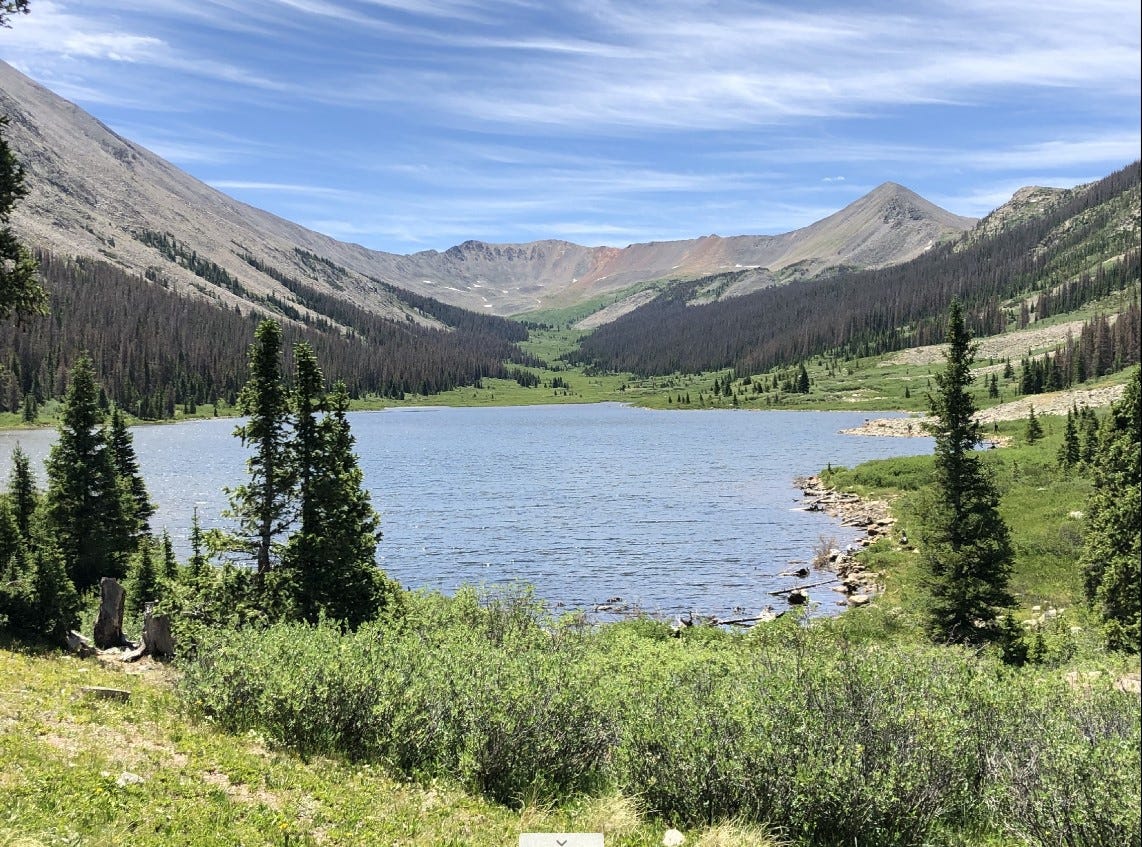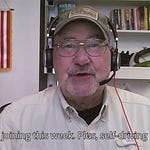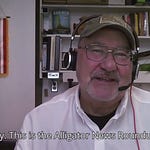We caught up with and passed the two older gentlemen on our way up the trail. As fellow hikers will, we smiled and greeted them cordially.
“Beautiful day for it, huh?”
Their response was in kind. “Sure thing! Have a good day!”
Who needs hiking boots?
A few yards past, out of earshot, my wife muttered incredulously, “Cowboy boots???”
I shook my head in dismay as I reflected on how she and I were attired for an overnight Colorado hike: Cargo pants with zip-off legs, a couple of layers of lightweight shirts; comfortable, rugged and expensive hiking boots. High quality packs with rain covers.
Waterproof and moisture-wicking everything.
Easily a thousand dollars of clothing and gear, not counting the Winston fly rods. The premium rods were disassembled and enclosed in custom carrying cases strapped to the backpacks, leaving hands free.
Our fellow hikers sauntered amiably in the aforesaid cowboy boots, overalls, denim shirts and straw hats. They each had a water bottle slung over a shoulder and carried bait-cast fishing poles. In their hands.
The only thing missing was a Folger’s coffee can full of worms.
Clearly, they were local to the area, and had the look of a couple of retired farmers taking the morning off for a stroll to their favorite fishing spot.
The scenery is the reward
We were in the Gunnison National Forest southwest of Buena Vista near the ghost town (and popular destination) of St. Elmo. Grizzly Lake was accessible on foot or by Jeep up a moderately rugged 7-mile trail. The alpine lake was situated just above 12,000 feet, right at tree-line, and offered gorgeous views with no hint of cell service.
The difficulty level of the hike is considered “strenuous.” After navigating the 2,000-foot elevation change from the trailhead, and climbing through the boulder fields, I agreed.
But the trip was absolutely worth it. The crisp, clean air (thin though it was), the scenery and the near-total seclusion are commodities that most of us can only purchase with hard labor. Or lots of money.
Or some combination of the two, which, as I reflected, was our approach.
To us Kansans, this was a carefully planned excursion that would be the highlight of our year.
The two cowboy-boot-wearing seniors apparently lived nearby. To them, it was just a morning’s diversion, calling for nothing out of the ordinary. A water bottle and a spin-cast rig would provide trout for lunch. Ho hum.
I don’t recall that we saw them again during the day as we fished from the shore, having brought along rubber boots for wading. Did I catch anything? Probably not; I’m not much of a fisherman, but one looks out of place without the rod and the flybox.
A mechanical solution
Somewhere around 5:00 PM we became aware of a motor running somewhere. After an hour, a Jeep crawled into sight. A local fellow named Chris had driven his vehicle up the trail to spend the night.
He camped a hundred yards away. We met him and he seemed like a congenial fellow.
Lynn and I set up our tent, ate freeze-dried something for supper and enjoyed the perfect, moonless night at altitude. Freeze-dried coffee and breakfast-something-else the next morning, and we were ready for the return trip down the trail.
So was Chris. He made an offer.
“You guys want to ride down with me?”
I studied him and his Jeep, not sure of the answer.
“It’s up to you,” he said with a smile. “It’s probably easier than walking, but you won’t save any time. It’s slow going.”
I glanced at Lynn, who shrugged and nodded. “Sure,” I said. “We won’t be in your way?”
He snorted. “Of course not. And besides,” he added, “the rock field is a little dicey. I could use a spotter for a couple of stretches.”
I knew in theory what this meant, and I did not relish the thought of a treacherous loose trail with a 300-foot drop waiting for a mistake. But I had already said yes. We loaded our packs in his Jeep.
Don’t try this at home
Crawling down the rock-strewn trail, Chris educated us on the differences between one-wheel-drive, two-wheel-drive, three-wheel-drive and four-wheel-drive. And transmission lockers. Whatever those are. It was an intriguing conversation for the mechanically minded.
Chris knew his stuff, and he knew when to ask me to exit the vehicle and direct him where to place a front wheel on a particularly treacherous stretch. I perched precariously on the edge of the trail, a few inches from loose moraine sloping steeply away downhill, and gestured to where he should place the left front tire.
Chris crept the Jeep forward as I directed, careful and deliberate. He paused to let me scramble forward, ahead of him, to direct the next few feet.
I can’t say this was fun, exactly, but it was interesting. The closest I had ever been to this activity was a video segment. Eventually we made it down safely, and he was right: It was not quicker than walking.
But it was a whole different sort of entertainment.
Note: Chris’ vehicle was not really a Jeep. I think it was some model of Chevy, a small SUV with a narrow footprint. And heavily modified suspension and drive train.
Grizzly Lake as metaphor
As I reflected on this later, I realized there were three distinct approaches to these trips to Grizzly Lake.
The old men in cowboy boots: Casual and low cost.
The two of us in upscale hiking apparel: Well-planned and expensive.
Chris and his Jeep: Multiple thousands of dollars and a virtual full-time hobby.
I have lately been engaged in a new initiative called Your Best Retirement. It aims to create:
a community of like-minded individuals
who seek to maximize their relevance
in the time granted to them by God.
Like the trip to Grizzly Lake, each of us manages the big three issues of life — Health, Wealth and Legacy — in our own way and with our own resources. I recently came across the Retirement Transition Wheel, a visual method for identifying one’s condition regarding key components of long-term retirement planning.
I did not create the tool — and it DOES NOT SELL FINANCIAL PRODUCTS — but I find it as useful for the person who is building career and family as for the one entering the fourth quarter of life.
I’d be glad to send you a copy and subscribe you to the free weekly Your Best Retirement newsletter. The newsletter will launch in a few days.
Click the link below for your copy.



















Share this post